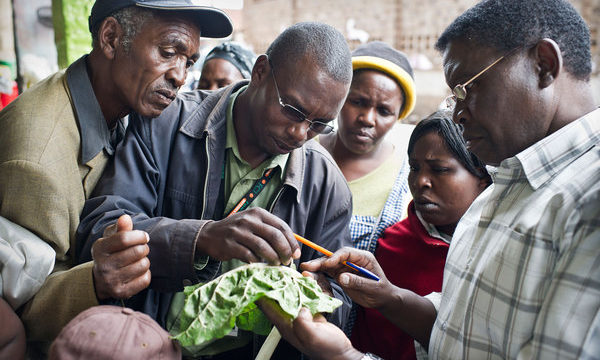Populations of the German cockroach (Blattella germanica) have rapidly evolved to be repelled by the glucose in insecticide baits that are used to kill them. Scientists found that the cockroaches had a ‘re-organised’ sense of taste which makes them perceive the glucose in the insecticide bait as bitter and repellent rather than sweet. Researchers first noticed that some pest controllers were failing to control cockroaches using insecticide baits mixed with glucose because the insects were avoiding the baits. It was discovered that within a matter of years certain cockroach populations had developed a new behavioural trait known as glucose aversion. A paper published in the journal Science describes the mechanism behind this avoidance.
As part of the experiment researchers offered cockroaches two foods, peanut butter and jelly, the latter containing a much higher concentration of glucose. The glucose averse cockroaches were repelled by the glucose in the jelly and preferred the peanut butter. The researchers then used electrodes to record the activity of the cockroaches gustatory receptor neurons, which are found within the hairlike structures on the mouthparts. They found that the cells that normally respond to bitter compounds were responding to glucose and overriding the response of the sweet responding cells in the glucose averse cockroaches.
The experiments have demonstrated natural selection in action- the process of natural selection would strongly favour any chance genetic change that caused a cockroach to avoid the bait and therefore death. The individuals with this trait would have a greater chance of surviving and reproducing, hence increasing the frequency of the trait in the cockroach population. There is a cost of this newly evolved trait- glucose averse cockroaches grow and reproduce slower than wild type cockroaches however under the strong selection pressure of glucose containing baits the glucose averse cockroaches will out compete the wild type cockroaches. The same process has led to antibiotic resistance in certain bacteria, warfarin resistance in some rodent populations and insecticide resistance in some insect populations.
The rapid emergence of this highly adaptive behaviour in cockroach populations shows the ability of the sensory system to adapt to rapid environmental change. Glucose aversion is a clear example of an adaptation that confers behavioural resistance to human pressures, thereby protecting the German cockroach from insecticides.
References
‘Cockroaches lose their ‘sweet tooth’ to evade traps’, Victoria Gill, BBC News, May 2013
Wada-Katsumata, A., Silverman, J., & Schal, C. (2013). Changes in Taste Neurons Support the Emergence of an Adaptive Behavior in Cockroaches Science, 340 (6135), 972-975 DOI: 10.1126/science.1234854
3 Comments
Leave a Reply
Related News & Blogs
CABI collaborates on innovative approach to tackling pesticide resistance evolution
Southern armyworm (Spodoptera eridania) – a pest which is prevalent in Brazil ©Lyle J. Buss/University of Florida CABI is joining an international team of scientists, led by the University of Stirling, to take a ‘revolutionary approach’ in attempting t…
13 May 2019



[…] some populations of a common and widespread pest, the German cockroach (Blattella germanica), have evolved ‘glucose aversion’. To those cockroaches, sweet-tasting baits are no longer attractive. Here’s the science about […]
Nice article! Thanks for sharing this informative post. Keep posting!
Thanks for sharing this useful information! Hope that you will continue with the kind of stuff you are doing.